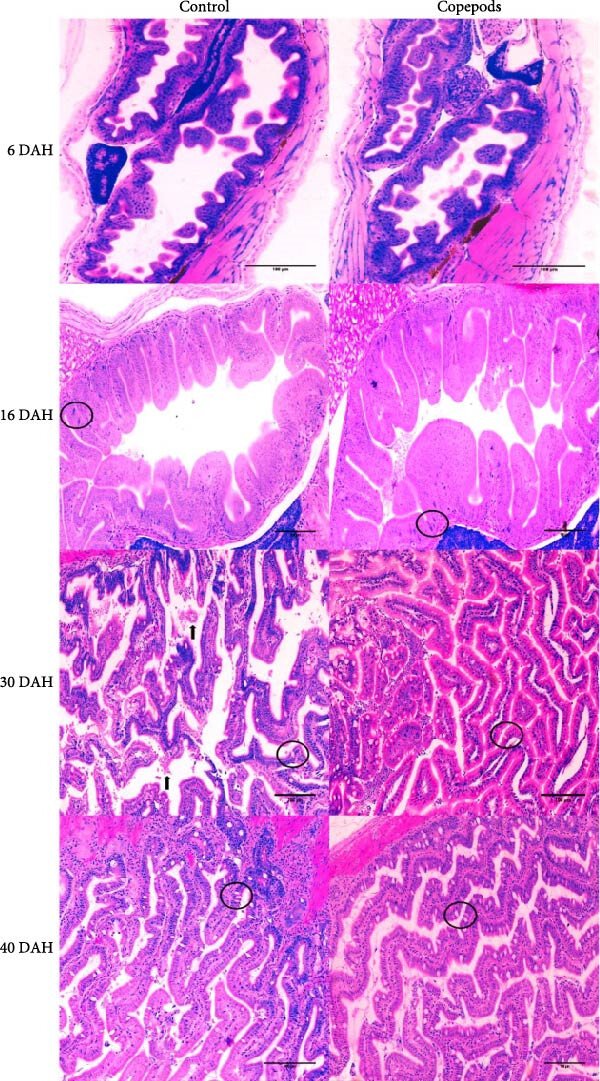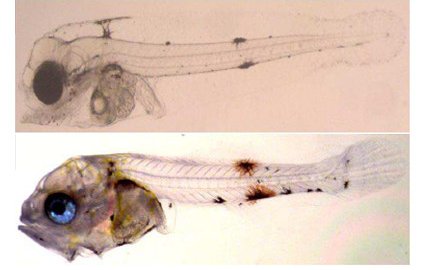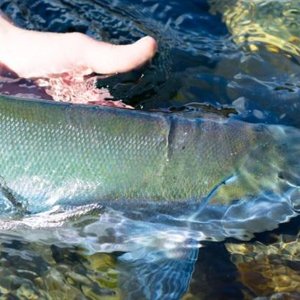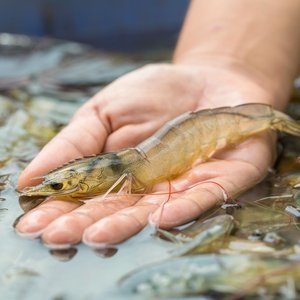Greater amberjack (Seriola dumerili) is a marine pelagic species, that has a rapid growth rate, and good flesh quality, and therefore, has great potential in the industry of aquaculture. Copepods are an important part of the natural diet of greater amberjack during the first developmental stages and up to the juvenile stage. It has been found that the nutritional profile of the copepods is more adequate than that of rotifers and Artemia, with a higher abundance of highly unsaturated fatty acids and free amino acids that enhance the digestive capacity of the fish.
As part of Katerina Loufi's PhD thesis The effect of feeding with Acartia tonsa on the ontogeny of the skeleton and digestive system in greater amberjack (Seriola dumerili) and seabream (Sparus aurata) larvae, the organogenesis and development of the digestive system in greater amberjack larvae after using Acartia tonsa nauplii during the first days of exogenous feeding was studied.
In a marine hatchery, four cylindroconical tanks of 2,700 L were stocked at a density of about 55 larvae/L. The larvae were initially fed from 3-17 DAH in two tanks with copepod nauplii supplied by CFEED and rotifers (Brachionus sp.; copepods group), while the other two tanks, were fed only with rotifers (control group) during the same period. All the tanks were fed with rotifers (3–27 DAH), Artemia nauplii (12–22 DAH), enriched Artemia metanauplii (20–30 DAH), and formulated diet (25–40 DAH).
Copepod-fed fish showed higher total length in the last 2 days of the trial, while mortality rates were lower at the beginning of the trial by 10–17 DAH. In addition, copepods-fed fish had fewer skeletal deformities.
Pyloric caeca appeared earlier in the copepods group compared with the control, while the length and surface of the villi, the abundance of goblet cells/100 μm of intestine length, and the area covered with lipid vacuoles in the liver were significantly higher in the copepods group.

The ontogeny of the villi in the anterior intestine in greater amberjack in both Control and Copepods groups in 6, 16, 30, and 40 DAH. Black circles show the goblet cells and black arrows show the desquamation in the villi of the fish larvae of the Control group 30 DAH. Scale 100 μm (Loufi et al., 2024b).
“We can conclude that the use of copepods in the diet of the greater amberjack larvae can improve the ontogeny of the digestive system,” Loufi concluded.
Watch Katherina Loufi presenting the results from her PhD thesis here.
References:
Loufi, Katerina, Papadakis, Ioannis E., Makridis, Pavlos, The Use of Acartia tonsa Nauplii during the First Days of Feeding on the Ontogeny of the Digestive System of Greater Amberjack (Seriola dumerili Risso, 1810), Aquaculture Nutrition, 2024, 1826300, 15 pages, 2024. https://doi.org/10.1155/2024/1826300













